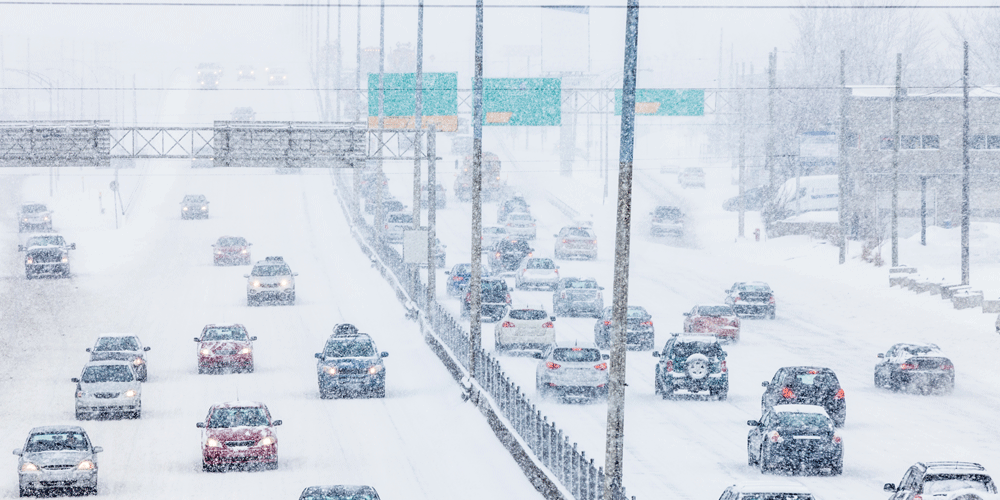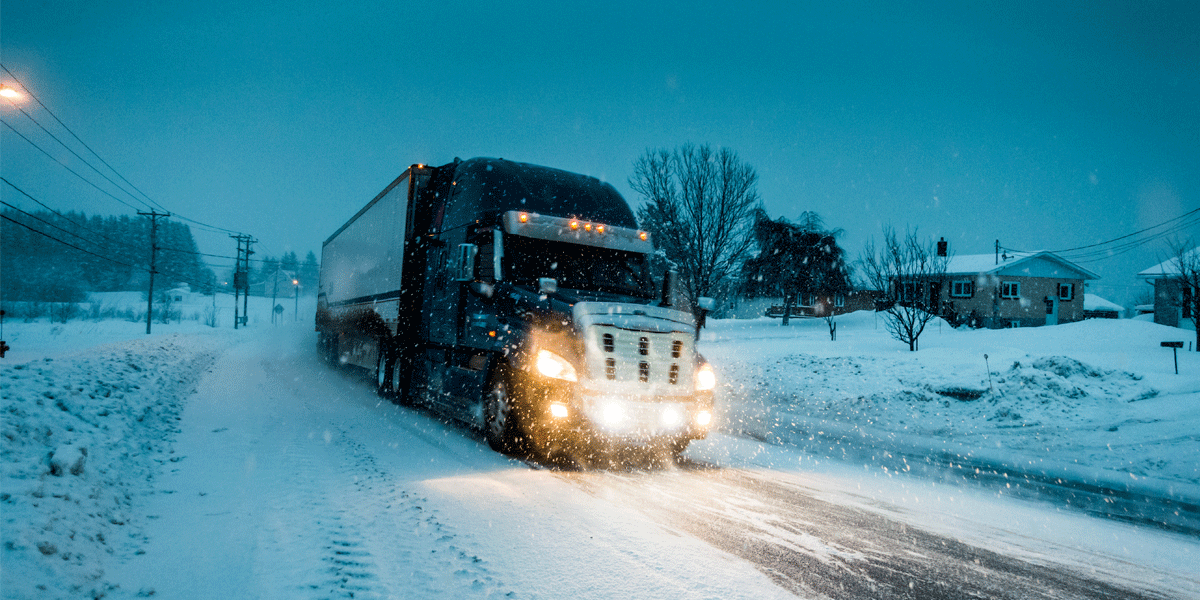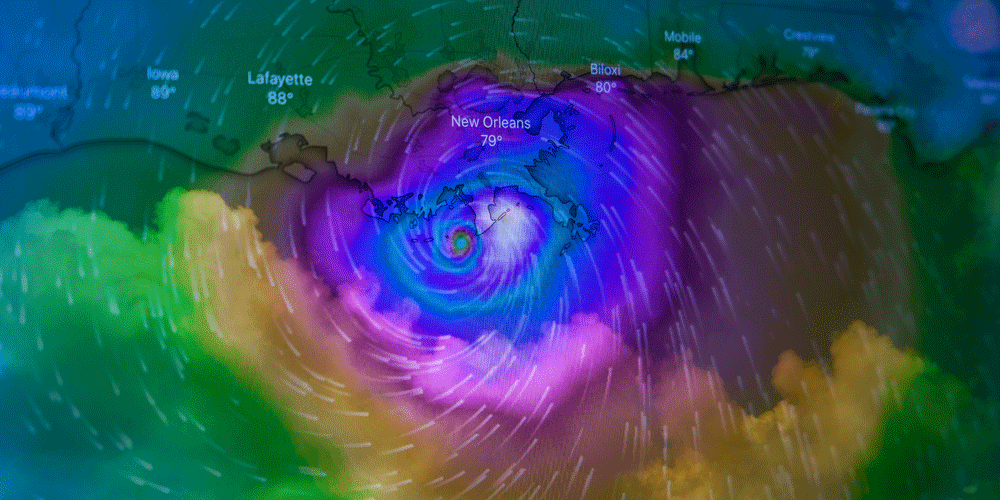Michael Carlson is a safety manager with ATS. He assists drivers, as well as the operations team, adhere to safety protocols. Before coming to ATS, he had years of hands-on safety experience. He worked for the railroad for a while before starting a career driving, where he hauled hazmat freight for eight years. Michael loves working for safety at ATS because he believes in the program. ATS has a great safety team and it takes each and every person to make the roads and the company safer.
As winter approaches, many people start to hunker down. They stay in more, cozying up on the couch with their families, a cup of hot cocoa and a good movie. They might head to the backyard to build a snowman, but they sure aren’t planning any long road trips across the country.
While many people do love the colder months — there’s plenty of winter fun to be had — most don’t love driving in ice and snow.
Truck drivers know this all too well. They don’t get to bundle up with a bowl of popcorn on the couch with their family. They’re still out on the roads, dealing with the nasty weather conditions day after day. In fact, their entire routine has to change to account for changing road conditions.
As a former truck driver, I know exactly how this goes. While I do love winter myself, it’s not always fun to be a truck driver this time of year — especially coming from Minnesota, where it’s cold and snowy for a good portion of the year.
Perhaps you’re not familiar with driving in the colder northern states in the winter. You could be new to driving or maybe you just need a winter driving refresher. Either way, when you’re done reading, you’ll leave with more tools than you came with to help you navigate the ice, snow and slush.
You’ll be left with tips about:
- Winter trip planning
- Reducing your speed
- Maintaining a good following distance
- Braking in snow and ice
- Winter truck maintenance
- Winter truck essentials
Strategy #1: Plan Your Trip and Check the Weather
Trip planning should be part of your normal routine as a truck driver. Whether you do it before you go to bed or you do it right before you start driving, the most successful drivers are the ones who spend at least a few minutes planning their routes for the day.
Trip planning isn’t just a matter of choosing which route you’ll take and determining which truck stops and rest areas you’ll stop at for breaks and fill-ups. It also involves looking at the weather so you can plan accordingly.
While checking the weather before you start driving is important all year round, it’s especially crucial in the winter months. You never know when a winter storm is going to pass through and leave snowy, icy roads in its wake for days.
It’s not a bad idea to check the weather every time you stop for a break or to get fuel. If you notice winter weather in the forecast, you have time to plan your trip accordingly.
Perhaps that means you start your day earlier, take a different road or park the truck during the height of the storm. When you know what to expect, you can make a plan to help ensure your safety.
In addition to looking at the radar, you should also check tools like SafeTravelUSA and 511. SafeTravelUSA shows real-time video and photographic evidence of current road conditions. Similarly, when you call 511, you’ll get up-to-date information on the road conditions for that state.
This is important because the radar might tell you that a storm has passed, while SafeTravelUSA or 511 will show you that there’s an accumulation of snow and ice on the roads.
It can take time to clear up snow and ice — especially the back roads that are prioritized last by snow plows. Plus, at 10 degrees and lower, salt doesn’t even work to melt the ice on the road. So, while the storm might’ve passed, the roads could be unpassable due to snow and ice.
Remember: If the weather is bad, don’t risk your life to deliver a load. Get off the road.
Strategy #2: Reduce Your Speed
Driving too fast is one of the most common winter driving blunders.
According to the Federal Motor Carrier Safety Administration (FMCSA), you should reduce your speed by 50 percent when weather conditions call for it. This requirement applies when the roads are snowy and icy or visibility is poor.
This regulation also requires drivers to discontinue the operation of the vehicle if road conditions are too dangerous to drive on.
Driving too fast in snowy, winter conditions gives you less time to react and to stop. For instance, if someone in front of you hits their brakes or you hit a patch of ice, you want as much distance between you and the vehicle in front of you as possible.
Tires don’t have as much traction with the road when roads are snow- or ice-covered. When you’re driving too fast on top of that, you’re more likely to slide. When you reduce your speed you give yourself more time to stop and avoid a collision.
Strategy #3: Maintain a Nine-Second Following Distance
Following too closely is never a good idea for any driver — winter weather or not. You never know when someone is going to swerve or brake suddenly.
Drivers should maintain a six-second following distance when road conditions are favorable. When road conditions are poor due to snow, ice or low visibility, you should bump that up to at least a nine-second following distance. Doing so will give you more time and space to come to a complete stop.

Strategy #4: Give Yourself Time to Slow Down
Don’t slam on the brakes when you’re driving on snow and ice — instead, give yourself plenty of time to slow down.
You can do that by following the strategies above (driving slower and increasing your following distance) and maintaining alertness. If you slam on your brakes, you’ll lose traction. This will make it hard to control your truck.
This information will help you figure out how long it takes to stop based on ideal driving conditions while driving 65 miles per hour (mph):
Trucks travel about 100 feet per second and it takes 300 feet to stop (about three seconds). However, there’s a half-second brake lag and 2.5 seconds of perception time and reaction time factored in. That means it takes about 600 feet (or six seconds) to stop in ideal road conditions.
When conditions aren’t great, that math will look a lot different. It’ll take a lot longer to stop when the roads are icy.
Strategy #5: Maintain Your Truck
Cold weather can exacerbate truck issues. You should get your truck into the shop before winter starts to make sure it’s ready to handle anything that might come your way.
Follow any instructions your shop gives you for adding fuel additives and filling up with winter fuel blends. This will prevent fuel gelling. The shop will make sure your fluids are treated properly and your battery has enough power to last the season.
Additionally, make sure you practice safety when inspecting your truck and securing freight. Your trailer and steps can be slippery, so place salt or kitty litter on them so you don’t slip. Avoid going on your slippery trailer if you can and try to secure and tarp from a ladder.
And make sure your windshield is clear before you start driving each day.
Related: Winterizing your truck
Strategy #6: Keep Your Truck Stocked with Essentials
Your truck should be well-equipped with supplies in the winter.
Keep it stocked with plenty of water and non-perishable foods in case of an extended breakdown. Make sure you pack extra warm clothes and an extra blanket or two — especially if you’re driving through the Midwest or Northeastern states.
In these areas, it’s not unusual for the temperature to drop below zero with the wind chill. Frostbite can occur in under 15 minutes when the wind chill is 18 below. While you might want to wear a light sweatshirt and Crocs in your truck as you drive, you definitely need to put on layers when you get outside to secure freight or go into the truck stop.
Succeed All Winter Long
As the winter season sets in, the contrast between the cozy comfort of home and the challenging reality faced by truck drivers becomes starkly evident. While many revel in the pleasures of winter, relishing family time and the warmth of home, truck drivers endure the harsh conditions on the roads, navigating through icy landscapes and relentless snowstorms.
In the wintertime, it becomes even more evident just how resilient and adaptable truck drivers are. As we get closer and closer to winter, don’t forget these important winter driving techniques. They’ll keep you and fellow motorists safer all season long.
For even more winter driving tips — including a packing list — check out these tools that will help you with winter driving.



